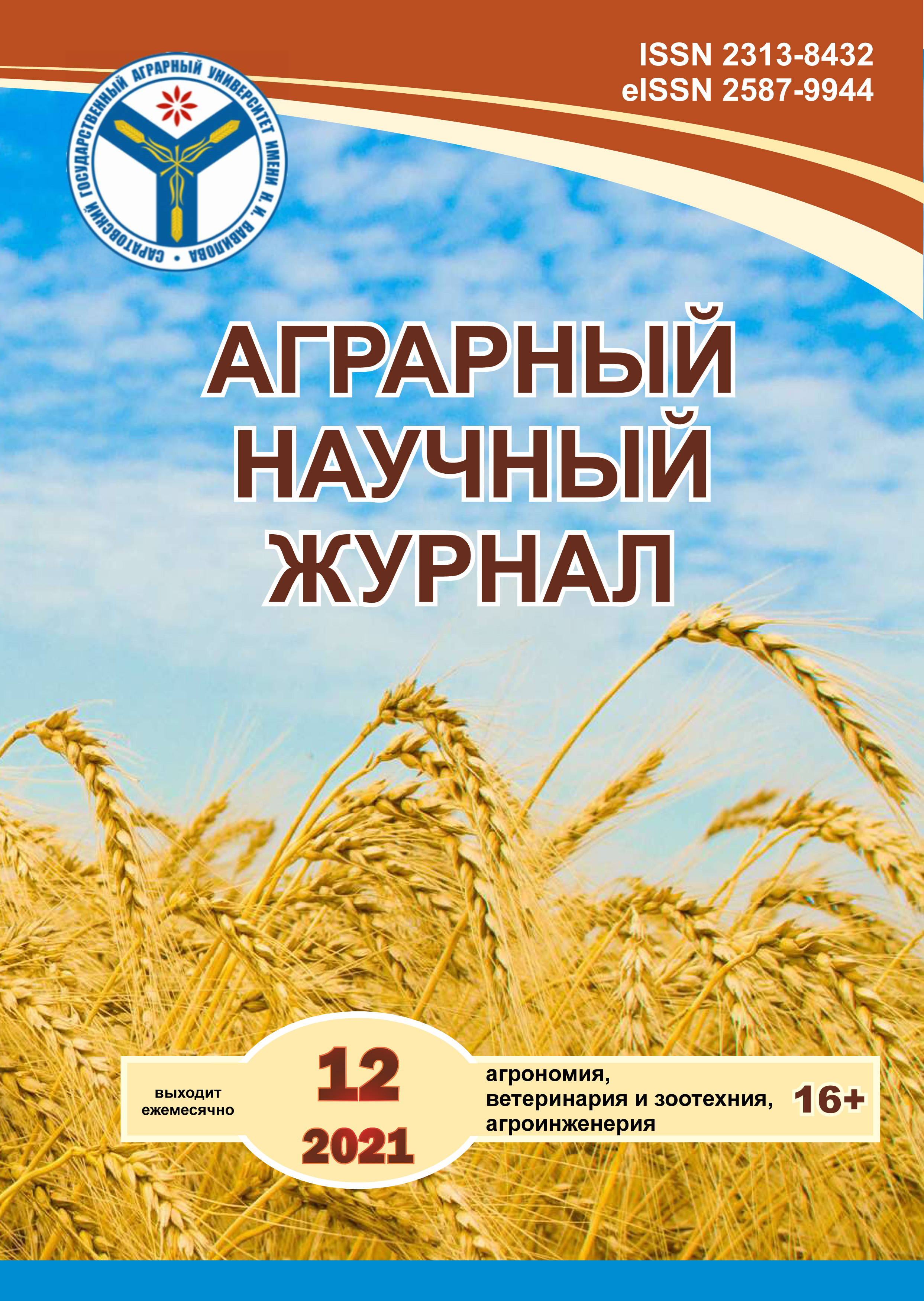Assessment of the results of grape breeding with the application of biopreparations in the conditions of the Southern Urals
DOI:
https://doi.org/10.28983/asj.y2021i12pp36-40Keywords:
grapes, selection, variety, berry weight, bunch, yield, biological productsAbstract
The results of long-term research on the creation of varieties and hybrid forms of early ripening grapes for the growing conditions of the Southern Urals are presented. It was shown that the created varieties and hybrid forms surpass the control in terms of yield by 17.7% (variety Aleshenkin Dar), 23.5% (hybrid form No. 37), 65.1% hybrid form 15-03-1 (Podarok Shatilova) and 111.9% (variety Pamyat Dombkovskoy). The biochemical properties of grapes were improved: the variety Pamyat Dombkovskoy exceeded the control in terms of vitamin C content by 15.42 mg / 100 g, hybrid form No. 37 - in terms of sugar content in berry juice by 19.2%. It is proved that the use of the biological product Samorod has a positive effect on the number of bunches formed on the bush, the mass of berries and the mass of the bunch, which leads to an increase in the yield of grapes: varieties Aleshenkin Dar by 54.0%, varieties Pamyat Dombkovskoy by 43.7%, hybrid form No. 37 by 66.4%, hybrid form Podarok Shatilova by 73.2%. Thanks to this, a high profitability of grape production is achieved, respectively, by varieties and hybrid forms of 92.0, 99.4, 106.0 and 159.0%, respectively.
Downloads
References
Доспехов Б. А. Методика полевого опыта (с основами статистической обработки результатов исследований). М.: Альянс, 2011. 352 с.
Лазаревский М. А. Изучение сортов винограда. Ростов н/Д.: Изд-во РГУ, 1963. 251 с.
Негруль А. М. Виноградарство с основами ампелографии и селекции. М.,1959. 392 с.
Пелях М. А. Справочник виноградаря. М.: Колос, 1971. 344 с.
Плешков Б. П. Практикум по биохимии растений. М.: Колос, 1976. 256 с.
Программа и методика сортоизучения плодовых, ягодных и орехоплодных культур. Орел: ВНИИСПК, 1999. 608 с.
Тихонова М. А., Аминова Е. В., Мережко О. Е.Продуктивность и урожайность столовых сортов и форм винограда в условиях Оренбуржья // Русский виноград. 2020. № 12. С.18–23.
Тихонова М. А., Салимова Р. Р., Панова М. А. Урожай и качество винограда под влиянием некорневой подкормки // Бюллетень Оренбургского научного центра Уро РАН. Оренбург, 2018. № 4. С. 21.
Трошин Л. П. Ампелография и селекция винограда. Краснодар: РИЦ «Вольные мастера», 1999. 138 с.
Уинклер А. Дж. Виноградарство США; под ред. А. М. Негруля. М.: Колос, 1966, 651 с.
Усков М. К., Михайлов С. В. Влияние стимуляторов роста на товарность гроздей столового винограда // Экспериментальные и теоретические исследования в современной науке: материалы V Междунар. науч.-практ. конф. Новосибирск: СибАК, 2017. № 5(5). С. 44–49.
Шатилов Ф. И. Северное виноградарство России. Оренбург, 1998. 146 с.
Frioni T., Sabbatini P., Tombesi S. et al. Effects of a biostimulant derived from the brown seaweed Ascophyllumnodosum on ripening dynamics and fruit quality of grapevines. ScientiaHorticulturae. 2018. Vol. 232. P. 97–106.
Guti?rrez-Gamboa G., Romanazzi G., Garde-Cerd?n T., P?rez-?lvarez E. P. A review of the use of biostimulants in the vineyard for improved grape and wine quality: effects on prevention of grapevine diseases // Journal of the Science of Food and Agriculture. 2019. Vol. 99. No. 3. P.1001–1009.
Zahedi S. M., Karimi M., Teixeira da Silva J. A. The use of nanotechnology to increase quality and yield of fruit crops. Journal of the Science of Food and Agriculture. 2020. Vol. 100. No. 1. P. 25–31.
Downloads
Published
Issue
Section
License
Copyright (c) 2021 The Agrarian Scientific Journal

This work is licensed under a Creative Commons Attribution-NonCommercial 4.0 International License.








